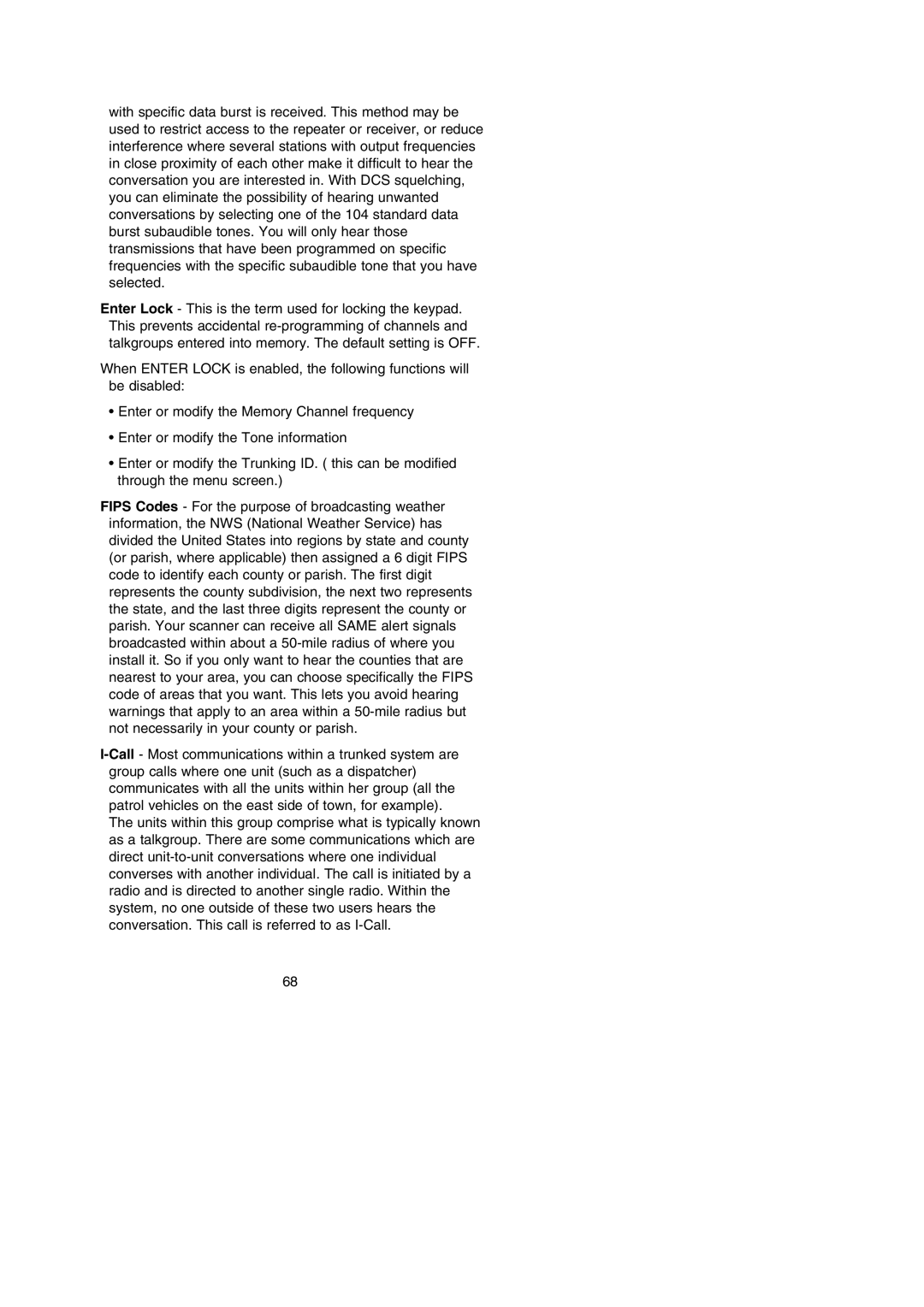
with specific data burst is received. This method may be used to restrict access to the repeater or receiver, or reduce interference where several stations with output frequencies in close proximity of each other make it difficult to hear the conversation you are interested in. With DCS squelching, you can eliminate the possibility of hearing unwanted conversations by selecting one of the 104 standard data burst subaudible tones. You will only hear those transmissions that have been programmed on specific frequencies with the specific subaudible tone that you have selected.
Enter Lock - This is the term used for locking the keypad. This prevents accidental
When ENTER LOCK is enabled, the following functions will be disabled:
•Enter or modify the Memory Channel frequency
•Enter or modify the Tone information
•Enter or modify the Trunking ID. ( this can be modified through the menu screen.)
FIPS Codes - For the purpose of broadcasting weather information, the NWS (National Weather Service) has divided the United States into regions by state and county (or parish, where applicable) then assigned a 6 digit FIPS code to identify each county or parish. The first digit represents the county subdivision, the next two represents the state, and the last three digits represent the county or parish. Your scanner can receive all SAME alert signals broadcasted within about a
The units within this group comprise what is typically known as a talkgroup. There are some communications which are direct
68
